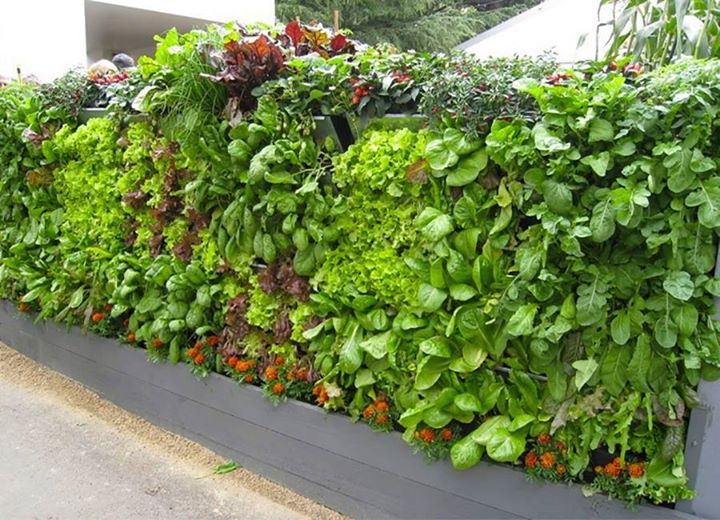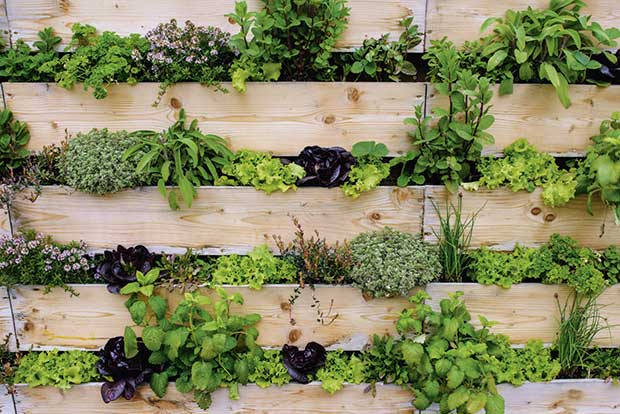Vertical Gardening: Self Sufficiency in the Smallest of Spaces
- Whispering Wind Ranches
- Mar 23, 2023
- 7 min read
Vertical gardening is an increasingly popular method of sustainable gardening, allowing urban gardeners to grow their own food even in the most confined spaces. With vertical gardening, you can maximize the use of your outdoor balcony or patio area, allowing you to grow fruits, vegetables, and herbs in an efficient and space-saving way. If you’re looking for a way to be more sustainable and to produce your own fresh, healthy food, then vertical gardening may be the perfect solution. In this blog post, we’ll take a closer look at how to get started with vertical gardening in small spaces.
Introduction to Vertical Gardening
Vertical gardening is an eco-friendly and creative way to grow plants in small spaces. Whether you’re living in an urban environment or a food desert, vertical gardening is an ideal solution for growing your own fruits and vegetables with limited space. This type of gardening involves growing plants up instead of out, allowing gardeners to maximize the amount of food that can be grown in a small area. With vertical gardening, you can also create a stunning living wall in your home or outdoor space. To get started on your own vertical gardening project, it’s important to know the basics of how to grow plants vertically, including the supplies and techniques needed. One of the main benefits of vertical gardening is its eco-friendly nature – with fewer resources used such as water and fertilizer compared to traditional ground farming, it's a great choice for those looking for more sustainable ways to feed themselves. When it comes to choosing suitable plants for urban gardening, make sure to research which varieties are best suited for smaller spaces and warmer temperatures – this is especially important if you're living in a food desert. Additionally, adding compost and mulch to your soil can help retain moisture and prevent weeds from taking over your garden. Last but not least, make sure to use trellises or other supports when necessary as well as planters that allow easy access to the root system. All these steps will ensure a successful harvest no matter what size space you're working with!
Benefits of Vertical Gardening
Vertical gardening is a great way to maximize space and utilize vertical space for growing vegetables, herbs, and fruits. It can be used to create an aesthetically pleasing garden in small spaces such as balconies, patios, decks, rooftops, or any other urban setting. Vertical gardens are also more efficient for harvesting, as all of the plants are close together, allowing for easier harvesting of fruits and vegetables. Additionally, vertical gardens reduce the need for weeding, as the dense planting structure prevents weeds from taking over. Finally, vertical gardening conserves water since the soil retains moisture better than in a traditional garden.
The soil in a vertical garden also warms up faster in the spring and stays cooler in the summer due to its close proximity to the sun. All of these benefits make vertical gardening a great option for those with limited space who still want to grow their own food. If you have an outdoor balcony, you can easily start your own vertical garden by buying a few planters and attaching them to your railing or wall.
You’ll need to fill the planters with potting mix and then choose your desired seedlings or plant cuttings. When it comes to choosing which plants to grow, try focusing on nutrient-dense foods like kale, lettuce, spinach, peppers, beans, tomatoes, and cucumbers. Herbs like basil and oregano work well too.
Once you’ve planted your seeds and set up your planters, remember to give your vertical garden enough sunlight and water it regularly. You may also want to consider adding additional supports (like trellises) if needed to keep your plants standing tall. With some planning and patience, you can have a thriving vertical garden in no time!
Tips for Growing a Vertical Garden
Growing your own food in a vertical garden is an easy way to make the most of a small space. Vertical gardening can increase yields, reduce maintenance time, and allow for easy harvesting. Here are some tips for growing a successful vertical garden:
1. Choose the Right Plants: Not all plants are suitable for vertical gardens. Tall plants like tomatoes, cucumbers, pole beans, squash, and melons are ideal for vertical gardens since they’ll grow up instead of out. Pick varieties that are bred for small spaces such as bush or determinate tomatoes.
2. Make Sure Your Structure is Sturdy: You want your vertical garden to be able to handle the weight of the soil and plants, so make sure you use a sturdy material like wood or metal. You may also want to use supports like trellises or netting to help keep your plants upright.
3. Plan Ahead: Before planting your vertical garden, make sure you plan out the layout of your plants. This will help ensure that your plants get enough sunlight and that the heavier ones don’t weigh down the lighter ones.
4. Water Regularly: Watering a vertical garden can be tricky since it can be hard to reach the top of your structure. To make it easier, set up a drip irrigation system or use a hose with an adjustable nozzle. Make sure to water at least once a week (or more in hot weather) to keep your plants healthy and productive.
5. Harvest Often: Regular harvesting will keep your plants producing more fruits and vegetables. Check your plants every few days and pick any fruits or vegetables that are ripe.
Following these tips will help you create a thriving vertical garden that produces fresh, delicious produce right in your own backyard!
Supplies Needed for Vertical Gardening
Growing a successful vertical garden requires just a few supplies. Depending on your garden’s size and layout, you may need more or less. Here are some basics:
1. Growing Containers: You can use a variety of containers, depending on the size and type of plants you’re growing. For bigger plants, you may want to consider large barrels or wooden crates. If you’re growing smaller plants or herbs, you can use hanging baskets, window boxes, or small pots. Make sure your containers have drainage holes.
2. Support Structure: Some plants need support to grow vertically. For these, you may want to invest in trellises, stakes, cages, or even wires. Bamboo poles also make great supports for climbing plants.
3. Soil: Good-quality soil is essential for healthy vertical gardens. You can choose from pre-mixed potting soils or combine your own ingredients for customized soil mixes.
4. Fertilizer: Add fertilizer to the soil mix to help nourish the plants and promote healthy growth. You can use organic fertilizers such as compost or manure.
5. Watering Tools: You’ll need something to water your plants, such as a watering can, hose, or irrigation system. Make sure your plants get enough water so they don’t dry out.
These are the basic supplies needed for successful vertical gardening. With these items in hand, you’re ready to get started!
Common Pests and Diseases in Vertical Gardens
One of the drawbacks of vertical gardening is the potential for pests and diseases to be a problem. Since plants in a vertical garden are densely packed together, diseases can quickly spread from plant to plant if one becomes infected. Additionally, pests may be attracted to the dense foliage of a vertical garden, making it important to take proactive steps to protect your plants.
The most common pests found in vertical gardens include aphids, caterpillars, whiteflies, slugs, and snails. These pests will feed on the foliage of your plants and can cause significant damage if left unchecked. To prevent or reduce damage from these pests, regularly inspect your plants for signs of infestation and take appropriate action when necessary.
In addition to pests, several diseases can affect your vertical garden. These include powdery mildew, downy mildew, blight, and root rot. Powdery mildew appears as white spots on the leaves of your plants, while downy mildew appears as yellow spots. Blight is characterized by yellowing or browning of the foliage, while root rot is caused by waterlogged soil that can lead to root damage and plant death.
If you notice any of these signs of disease in your vertical garden, take action immediately to stop the spread. Remove any infected leaves or plants and dispose of them properly. If needed, treat the area with an appropriate fungicide. Additionally, make sure you are providing proper care for your plants, including adequate light and drainage, to help prevent disease from occurring in the first place.
Troubleshooting Common Problems in Vertical Gardens
For all its benefits, vertical gardening can be a bit tricky to master. Thankfully, many common problems have simple solutions that can help you troubleshoot your way to success.
One of the most common issues when it comes to vertical gardening is inadequate light. Most vegetables and herbs need at least 6 hours of direct sunlight a day, and some may require even more. If your vertical garden is located in an area that doesn’t receive enough light, you can supplement with grow lights. You may also want to consider using reflective surfaces like mirrors or Mylar to increase the amount of available light.
Another common issue is water retention. Vertical gardens tend to dry out quickly due to their exposed nature. To combat this problem, be sure to use planters with holes in the bottom for drainage, and water your plants regularly. You may also want to consider mulching your plants with materials like wood chips or straw to help retain moisture in the soil.
Finally, if your plants start wilting or showing signs of distress, it could be a sign of nutrient deficiency. Be sure to fertilize your plants regularly with a balanced fertilizer. If you’re growing organically, you can also opt for natural fertilizers like compost or fish emulsion.
By taking the time to troubleshoot common problems in your vertical garden, you can ensure that your plants are healthy and thriving. With patience and diligence, you’ll soon be able to enjoy the fruits of your labor!











